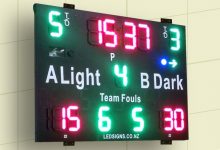PLD prep for 2021

A report published by the Education Review Office reinforces the importance of professional learning and development (PLD), identifying it as a central tenet for maintaining and improving teacher quality.
The report identifies that teaching is a “complex and demanding profession” and acknowledges teachers require high quality support and training throughout their careers to ensure they have the strategies and skills to continue to meet the needs of learners.
Read our new Term 4 issue online today!
The report was published more than a decade ago yet its overview still rings true today with New Zealand educators confronting a rapidly changing environment.
The changes extend beyond the classroom for teachers and school leaders with the Ministry of Education having reset its PLD guidelines, identifying seven new priorities with regionally allocated PLD needing to align with one or more of the priorities.
The new national priorities for English medium settings focus on cultural capability, local curriculum design, and assessment for learning while Mātauranga and te reo Māori, marau ā-kura and aromatawai are the new priorities for Māori medium settings. Digital fluency remains a priority for teachers and leaders in all schools.
The new priorities were introduced at the beginning of Term 3, meaning teachers and school leaders can apply against them in Term 4 for delivery in Term 1, 2021.
The new priorities have been established to support the Government’s vision of a New Zealand education system that meets the needs of all learners, no matter who they are or where they come from, but not all agree the changes will deliver the desired outcomes.
Perry Rush, national president of the New Zealand Principals’ Federation, said it is cause for concern that regionally allocated PLD must align with one or more of the seven priorities.
“This has the effect of only ensuring those priorities are supported and that there is a contestable market for PLD applications. This means that some schools are supported, and some schools miss out,” he said.
“It also means that schools that have bespoke needs around particular development goals not recognised in Government priorities, must source and fund their own professional learning and development.”
Mr Rush also said there is insufficient funding for PLD and what money is available is contestable so that many schools seeking support miss out.
“The pace of educational change requires a much more significant investment in PLD and across a much broader swathe of curriculum,” he said.
While the regionally allocated funding is linked to the new priorities, there are other PLD opportunities available for educators, including working together informally to improve knowledge and understanding. Informal professional learning activities include providing or receiving feedback from a colleague on teaching practice or new teaching materials and discussing with colleagues different teaching strategies to use with students.
For those pursuing formal PLD activities there are study awards, sabbaticals and study support grants available to help teachers and school leaders.
The teachnz website provides details about funding available for teachers and principals looking to pursue study and there are opportunities to apply for three, five or 10-week sabbaticals to complete a professional learning activity or for reflection and rejuvenation.
For teacher aides, a new $2.29 million fund has been rolled out this year designed to provide easier access to PLD opportunities.
The fund has been made to support teacher aides to pursue training opportunities within their school or cluster. It can also pay for classes offered by private providers, polytechnics and universities and covers both face-to-face and online delivery.
For those schools looking to apply for regionally allocated PLD, a new online system has replaced the previous manual system in a bid to simplify the application, allocation and planning processes.
By David Carroll









